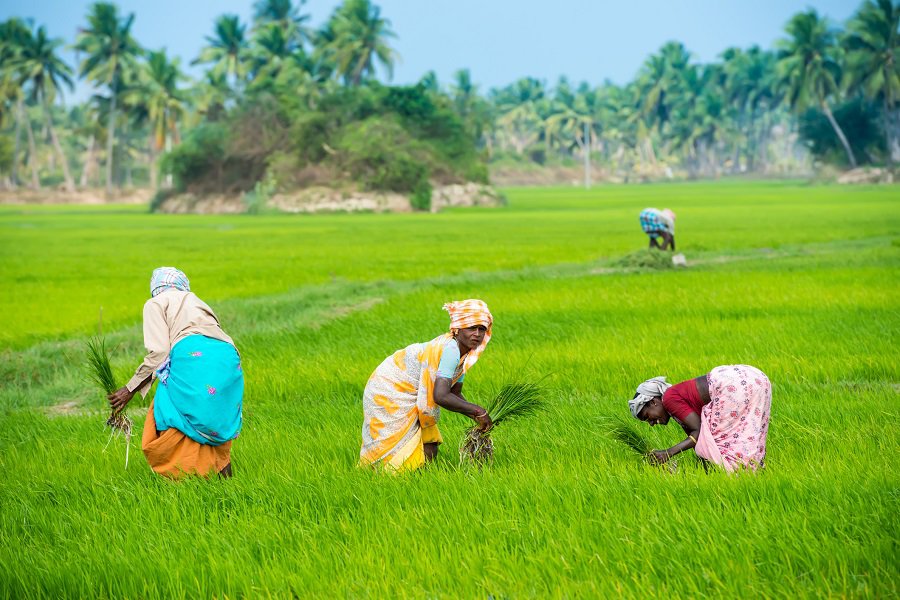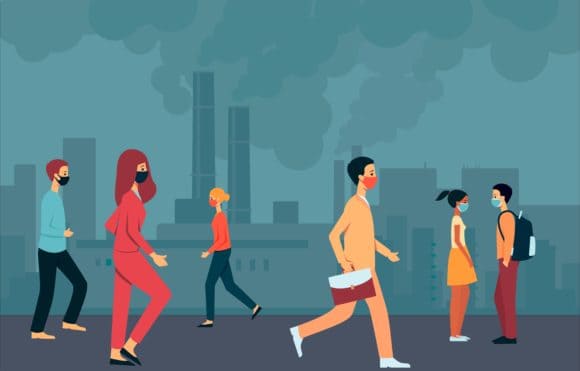Nov 11, 2021 | Brazil, Economics, Environment
By Fanni Daniella Szakal, 2021 IIASA Science Communication Fellow
In an attempt to foster economic development for Brazil, the government is planning to open up indigenous and protected areas for mining. But will this truly lead to economic development for the country? 2021 Young Scientists Summer Program (YSSP) participant, Sebastian Luckeneder is using spatial modeling to find out.

© Prabhash Dutta | Dreamstime.com
As the largest rainforest on the planet, the Amazon harbors the highest biodiversity of all ecosystems and is home to many indigenous tribes. It is also literally sitting on a goldmine of natural resources. There are plans in the works to open up protected and indigenous areas of the rainforest to mining activities, which is expected to bring more wealth and development for the country, but at the same time, it will also pose a threat to the environment and indigenous communities.
At first glance, the issue looks like the classic trade-off between economic growth versus environmental and social disruption. In reality however, mining affects social, environmental, and economic spheres both directly and indirectly, creating a complex network of interactions that potentially defy the current dogma.
Mining relies heavily on machines while creating relatively few jobs in comparison to the investment of capital it requires. In addition, mining companies are often large international corporations, which means that most of the profits gained from mining operations in a particular country end up outside that country’s borders.
“One could say that just the very few benefit from extractive activities, whereas many have to pay the cost,” says Sebastian Luckeneder, a 2021 YSSP participant at IIASA, when referring to the environmental destruction, disruption of livelihoods, and displacement of indigenous communities that mining would bring about.
As a second-year PhD candidate at the Institute for Ecological Economics of Vienna University of Economics and Business (WU), Luckeneder is studying the environmental and socioeconomic impacts of mining activities. At IIASA, he used spatial modeling to understand how mining and land use affect regional economic growth in Brazil in the hopes of finding the best economic solution for the country.
Using GDP growth as a proxy for economic development, he looked at the impacts of mining and other types of land use between 2000 and 2020. The model incorporates data on mining, agriculture, and land-use change, as well as other socioeconomic factors, such as employment and infrastructure for about 5,500 municipalities in Brazil.
The study is as complex as it sounds: Luckeneder’s main challenge is to set up a theoretical framework that depicts how the environmental and socioeconomic factors influence each other. Once his comprehensive model is complete, he hopes to get a clear picture of how mining affects the Brazilian economy.
He suspects that while mining activities would bring some economic gains, these might not be sustainable, as the environmental and social upheaval that follow the opening of a mine could negatively impact development in the long-run.
While economic development is important, in the current climate crisis, decisions to enable activities that lead to deforestation cannot be taken lightly. Luckeneder hopes that his results will be used to inform the political debate in Brazil and support policy decisions by the way of science.
Oct 2, 2020 | Climate Change, Economics, Food, Poverty & Equity
By Charlotte Janssens, guest researcher in the IIASA Ecosystems Services and Management Program and researcher at the University of Leuven and Petr Havlík, Acting Ecosystems Services and Management Program Director.
Charlotte Janssens and Petr Havlik write about their recent study in which they found that world trade can relieve regional impacts of climate change on food production and provide a way to reduce the risk of hunger.

© Alisali | Dreamstime.com
In a warmer world, decreasing crop yields and rising food prices are expected to strongly jeopardize the achievement of Sustainable Development Goal (SDG) 2 – ending global hunger. Climate change has consequences for food production worldwide, but there are clear differences between regions. Sufficient food is expected to remain available in the Northern hemisphere, while in regions such as sub-Saharan Africa or South Asia, falling crop yields may lead to higher food prices and a sharp rise in hunger.
In our recent publication in Nature Climate Change, we find that world trade can relieve these regional differences and provide a way to reduce hunger risks under climate change. For example, if regions like Europe and Latin America where wheat and corn thrive increase their production and export food to regions under heavy pressure from the warming of the Earth, food shortages can be reduced.
Global Hunger by 2050
The State of Food and Nutrition Security in the World 2020 reports that globally almost 690 million people were at risk of hunger in 2019. Many factors determine how global hunger will develop in the future, including population growth and economic development, as demonstrated in a study in Environmental Research Letters. Our article uses the “middle-of-the-road” socioeconomic pathway where population reaches 9.2 billion, income grows according to historical trends, and the number of undernourished people decreases to 122 million by 2050. Within this socioeconomic setting, we investigate the impact of different climate change scenarios and trade policies on global hunger by 2050.
The worst-case climate scenario of a 4°C warming leads to an extra 55 million people enduring hunger – a 45% increase compared to the situation without climate change. In a protectionist trade environment where vulnerable regions cannot increase their food imports as a response to climate impacts, this effect rises to 73 million. The largest hunger risks are located in South Asia and sub-Saharan Africa, with respectively a 33 million and 15 million increase in people at risk of hunger in the worst-case climate scenario.
Where barriers to trade are eliminated, “only” 20 million people endure food shortages due to climate change. While this number is high, it is a vast improvement on the 73 million people that would potentially be exposed to hunger without the suggested measures. In the milder climate change scenarios, an intensive liberalization of trade may prevent even more people from enduring hunger owing to global warming. Yet a liberalization of international trade may also involve potential dangers. If Asian countries increase rice exports without making more imports of other products possible, they could well end up with a food shortage within their own borders.
Mobilizing Investment
Our study shows not only that the challenge of ending global hunger is strongly determined by the extent of progress on SDG 13 (climate action), but also that achievement of SDG 2 (zero hunger) is affected by developments articulated in SDG 9 (resilient infrastructure). We find that international trade can relieve regional food shortages and reduce hunger, particularly where trade barriers are eliminated. Such trade integration requires phasing out import tariffs as well as the facilitation of trade through investment in transport infrastructure and technology. Especially in low-income regions such as sub-Saharan Africa infrastructure is weak. In its 2018 African Economic Outlook, the African Development Bank (AfDB) estimates that between USD 130 billion and 170 billion a year is needed to bridge the infrastructure gap in the region by 2025. Given that infrastructure finance averaged only USD 75 billion in recent years, and the largest contribution is coming from budget-constrained national governments, alternative financing through institutional and private investments could be crucial in the face of climate change.
Crisis and Protectionism
In times of crisis, countries are inclined to adopt a protectionist stance. For example, in the face of the current COVID-19 pandemic, several countries have temporarily closed their borders for the export of important food crops (see IFPRI Food Trade Policy Tracker for updated information). Some commentators warn that such measures can have large detrimental effects on food security. Our study finds that also in the context of climate change, a well-thought-out liberalization of trade is needed in order to be able to relieve food shortages properly.
Reference
Janssens C, Havlík P, Krisztin T, Baker J, Frank S, Hasegawa T, Leclère D, Ohrel S, et al. (2020). Global hunger and climate change adaptation through international trade.
Nature Climate Change [
pure.iiasa.ac.at/16575]
This blog post first appeared on the SDG Knowledge Hub website. Read the original post here.
Note: This article gives the views of the authors, and not the position of the Nexus blog, nor of the International Institute for Applied Systems Analysis.
Aug 21, 2019 | Air Pollution, Economics, Environment, Health, Young Scientists
By Luiza Toledo, IIASA Science Communication Fellow 2019
2019 YSSP participant Muye Ru investigates the main health impacts of air pollution and what this means for the economy and social development of a country.

© Sabelskaya | Dreamstime.com
Air pollution is one of the greatest environmental health risks of our time. It is the second most common cause of non-communicable diseases like stroke, cancer, and heart disease, and it annually leads to around seven million premature deaths.
According to the World Health Organization (WHO), almost 90% of people worldwide breathe polluted air. Even though we can say that air pollution is impartial, affecting people regardless of gender, race, social class, or economic status, the burden of ill health caused by air pollution primarily affects middle and low-income cities and marginalized populations. The economic cost of air pollution and its impacts on health is known as non-market costs and includes the monetized welfare costs of mortality (premature deaths), and of the disutility of illness (pain and suffering).

Muye Ru, YSSP participant. © Ru
Muye Ru, a 2019 Young Scientist Summer Program (YSSP) participant, is studying the main health impacts of air pollution and what this means for the economy and social development of a country. Her project will establish a methodology based on meta-analysis, to estimate the economic costs of selected morbidity outcomes of exposure to air pollution in a population, and test its application at various geographical scales (national, regional, and global).
“The idea behind my work is that bad air quality causes a burden for societies. We know that many people will die or be disabled because of it, but we don’t have a very good understanding of exactly what the social and economic cost of that is,” explains Ru.
It is easy to grasp that the burden of sick and disabled people will affect the economy of a country. For example, imagine a scenario where a family member is diagnosed with lung cancer. The illness will most probably influence the entire family in terms of loss of income when the person is unable to work due to his/her illness, or reduced funds available for savings and necessities like food and utilities due to the cost of treatment.
Ru’s project specifically focuses on the rate and duration of air pollution related-diseases in populations. According to her, this rate is extremely important once you start studying the high economic losses and social disturbances caused by illness and healthcare expenditures.
“It’s about how people are disabled, the effect of this burden on their lives, as well as how these changes in their lives are impacting the economy,” she says.
Ru hopes that her work will be useful to policymakers in creating and applying policies to combat air pollution that will lead to multiple benefits for the economy, the environment, and human health. She wants her research to make people more aware of how they are contributing to air pollution and how the cost of it affects everyone’s lives.
Note: This article gives the views of the author, and not the position of the Nexus blog, nor of the International Institute for Applied Systems Analysis.
Aug 8, 2019 | Data and Methods, Economics, IIASA Network, Russia
By Serguei Kaniovski, Economist with the Austrian Institute of Economic Research (WIFO)
Serguei Kaniovski and colleagues from IIASA and the Steklov Mathematical Institute of the Russian Academy of Sciences revisited a classic growth model in resource economics using recent advances in optimal control theory.
The late 1960s and early 1970s gave rise to Doomsday Models that predicted a collapse of Western Civilization under the pressure of over-population and environmental pollution. The very influential 1972 Club of Rome’s report on the “Limits to Growth” painted a gloomy picture, sparking an ongoing debate. One question was whether the scarcity of natural resources like fossil fuels would limit growth and cause a substantial decline in people’s standard of living.
The Doomsday reasoning was met with doubt by the economists of that time, leading the future Nobel Prize laureate and growth theorist, Robert Solow, to state that “the various Doomsday Models are worthless as science and as guides to public policy“. In a combined effort, economists developed a class of growth models with resource constraints. The conclusions they reached using the Dasgupta-Heal-Solow-Stiglitz (DHSS) modeling framework offered a more optimistic outlook.

© Kantver | Dreamstime.com
Economic applications have been well ahead of the mathematical theory used for identifying optimal economic policies, leaving some model solutions unexposed and some technical issues unsettled. The theory that allows us to identify optimal policies and describe the model dynamics was originally developed in the 1950s for engineering applications but has since become the main tool for analyzing economic growth models. These models however contain many features that are not standard to optimal control theory – a subfield of mathematics that deals with the control of continuously operating dynamic systems – which makes a fully rigorous analysis difficult. The key theoretical challenges are infinite planning horizons and nonstandard control constraints.
In our latest paper we offer a complete and rigorous analysis of the welfare-maximizing investment and depletion policies in the DHSS model with capital depreciation and arbitrary (decreasing, constant, and increasing) returns to scale. The investment policy specifies the portion of the final output to be invested in capital. A depletion policy says how fast a finite stock of exhaustible resources should be used. We prove the existence of a solution and characterize the behavior of solutions for all combinations of the model parameters using necessary rather than sufficient (Arrow’s theorem) optimality conditions.
In the main case of decreasing, constant, or weakly increasing returns to scale, the optimal investment and depletion policies converge to a constant share of output invested in capital and a constant rate of depletion of the natural resource. The optimal investment ratio decreases with the longevity of capital and impatience. The relationship between the optimal investment ratio and the output elasticity of produced capital is ambiguous. The performed analytical analysis identifies those relationships among model parameters that are critical to the optimal dynamics. In this, it differs from more conventional scenario-based approaches. From a practical point of view, application of the model to real data could be helpful for evaluating actual depletion and investment policies.
Strongly increasing returns to scale make it optimal to deplete the resource without investing in produced capital. Whether a zero-investment strategy is followed from the outset, from an instant of time, or asymptotically will depend on the sizes of the capital and resource stocks. In some special cases of increasing returns, welfare-maximizing investment and extraction policies may not exist under strong scale effects in resource use. This occurs when an initial stock of capital is small relative to the initial resource stock. It implies that it would have been impossible to formulate a welfare-maximizing policy in the early history of humanity, when produced capital was scarce and resources were abundant.
Reference
Aseev S, Besov K, & Kaniovski S (2019). Optimal Policies in the Dasgupta—Heal—Solow—Stiglitz Model under Nonconstant Returns to Scale. Proceedings of the Steklov Institute of Mathematics 304 (1): 74-109. [pure.iiasa.ac.at/15946]
Note: This article gives the views of the author, and not the position of the Nexus blog, nor of the International Institute for Applied Systems Analysis.
Jun 12, 2019 | Economics, Energy & Climate, Eurasia, Young Scientists
By Dmitry Erokhin, Research Assistant in the IIASA Advanced Systems Analysis Program
Dmitry Erokhin shares his thoughts on the promotion of economic progress and security through energy cooperation, good governance, and connectivity in the digital era.

Nadejda Komendantova and Dmitry Erokhin at the OSCE EEF meeting in Bratislava © Dmitry Erokhin
From 27 to 28 May 2019, Bratislava hosted the Second Preparatory Meeting of the 27th Economic and Environmental Forum of the Organization for Security and Cooperation in Europe (OSCE EEF) on “Promoting economic progress and security in the OSCE area through energy cooperation, new technologies, good governance and connectivity in the digital era”.
As part of my work on digitalization in Greater Eurasia, I was particularly interested in attending this meeting.
A major part of the event was devoted to questions surrounding energy security, which is a very important factor of cooperation in the OSCE area. All 57 participating states across North America, Europe, and Asia are interested in stable energy supply. Doing energy right is a way to promote progress, security, and prosperity. Orientation towards sustainable development, limiting the use of conventional energy sources, oil conflicts, and cyber attacks make both energy demanders and suppliers search for new solutions. In this regard, the use of renewable resources promises long-term benefits in terms of energy efficiency, new jobs, as well as a secure and resilient energy sector. This is however not possible without peace, which makes the protection of infrastructure crucial. There is no prosperity without peace and no peace without prosperity.
I found it particularly valuable that new technologies were included in the discussion. Blockchain – a system in which a record of transactions made in bitcoin or another cryptocurrency are held across several computers that are linked in a peer-to-peer network – along with big data, are creating new opportunities in the energy sector, for example, in terms of new forms of energy trading. However, they can also pose some risks as they create certain dependencies, thus raising questions of sustainability. For instance, automated driving raises many regulatory issues on how to ensure against cyber attacks and missiles, or how to divide responsibilities between producers and users. Advanced technologies have to be employed safely and efficiently. International organizations could play a vital role in enacting common standards and regulatory norms for digitalization and connectivity in this regard. One grand example here is the single window recommendation, which is a trade facilitation idea that enables international traders to submit regulatory documents at a single location. The idea is that such a system would facilitate trade through good governance.
The establishment of regional communication platforms and the development of science, research, and innovations are of particular importance. Key agents need to talk about secure and clean energy. This could be achieved through intra-institutional cooperation and inclusive dialogue. I believe that institutions like IIASA can play a huge role here.
Talking about new technologies, it is an important task to conduct studies on barriers to trade, especially in the context of blockchain and machine learning technologies in digital trade in order to detect inefficiencies at borders and improve market access. In the energy field, there are many controversial estimates (simultaneously in favor of conventional and renewable energy sources), which also make independent reputable studies essential.
Nadejda Komendantova, a researcher with the Advanced Systems Analysis Program at IIASA also represented the institute at the OSCE meeting, where she moderated a session on protecting energy networks from natural and man-made disasters. The sessions’ participants discussed the impact of these factors on energy security, analyzed opportunities and threats for secure energy networks connected with new technologies, raised questions of resilience, and talked about the mitigation of threats through effective policies and cooperation. The OSCE Critical Energy Infrastructure Protection (CEIP) Digital Training Platform was presented during the session.
To conclude, I would like to emphasize that we need more such constructive and fruitful discussions to catalyze trust, growth, security and connectivity. Partnerships create political will and make open dialogue and mutual support very important. I believe that organizations like IIASA are key to making this possible.
Note: This article gives the views of the author, and not the position of the Nexus blog, nor of the International Institute for Applied Systems Analysis.
Jan 16, 2019 | Economics, Eurasia, Russia, Systems Analysis
By Dmitry Erokhin, MSc student at Vienna University of Economics and Business (Wirtschaftsuniversität Wien) and IIASA Youth Forum participant

Dmitry Erokhin at “Connecting Europe and Asia”
On 14 December 2018, the Austrian Central Bank and the Reinventing Bretton Woods Committee co-organized a high-level conference on “Connecting Europe and Asia,” convening high-level policy makers, top business executives and renowned researchers. Taking place toward the end of the Austrian Presidency in the Council of the European Union, the goal of the event was to discuss ways to improve cooperation between Europe and Asia.
As a true Eurasianist and a member of the European Society for Eurasian Cooperation I was really interested in attending the conference.
It was opened by the governor of the Austrian Central Bank, Ewald Nowotny, who said that cooperation between Asia and Europe is vital, especially with China’s growing economic and political influence. Nowotny expressed regret that some countries see this as a challenge rather than an opportunity. Europe, however, remains the best place to be because of its economic strength.
Marc Uzan, the executive director of the Reinventing Bretton Woods Committee, noted that we live in a new age of connectivity. The economic ties between the EU and Asia are quite strong but there is still space for stronger connectivity in the form of physical and non-physical infrastructure, market integration, and maintaining stability in Central Asia. Uzan highlighted the role of the European Investment Bank in various connecting projects.
During the panel session on “Integration in Europe: European Union and Eurasia”, Elena Rovenskaya, the program director for Advanced Systems Analysis at IIASA, presented the institute as a neutral platform for depoliticized dialogue. IIASA has been running a project on the “Challenges and Opportunities of Economic Integration within a Wider European and Eurasian Space” since 2014, analyzing transport corridors, foreign direct investment, and convergence of technical product standards between EU and the Eurasian Economic Union.
This report was especially exciting for me because I had a great opportunity of participating in the International Youth Forum “Future of Eurasian and European Integration: Foresight-2040”, hosted by IIASA in December 2017, and found it interesting to see how research into Eurasian integration at IIASA has advanced since then. The concept of dividing the integration in two subgroups (bottom-up and top-down) suggested by Rovenskaya also seemed new to me.
‘Bottom-up’ integration requires coordination between participating countries and involves development of transport and infrastructure – known as the Belt and Road Initiative – including development of the Kosice-Vienna broad gauge railway extension, and the Arctic railway in Finland. The top-down scenario would be based on cooperation between regional organizations and programs such as the EU, the EAEU and the Eastern Partnership. The challenge lies in harmonizing different integration processes.
I find it unfortunate that despite the positive impact of theoretical EU-EAEU economic integration and cooperation showed by IIASA’s research, the economic relations between the EU and the EAEU are currently defined by foreign policies and not by economic reasoning.
In his address, William Tompson, the head of Eurasia Department at the Global Relations Secretariat of the OECD, highlighted that the benefits of enhanced connectivity were not automatic and that complex packages, going beyond trade and infrastructure, would be needed. I consider that Tompson raised an important point that we should not exaggerate the benefits – landlocked locations and distance to global markets can be mitigated but not eliminated. Coordination among countries to remove infrastructure and non-infrastructure bottlenecks will necessary.
Tompson’s empirics convinced me that there is a call for change. Kazakhstan pays US$250/t of freight to reach the countries with 20% of the global GDP, compared to just US$50 for Germany and the US. This is due to factors like distance, speed, and border crossings.
I was impressed by Tompson’s international freight model. It shows that logistics performance is generally poor, and competition could be enhanced. The link between policy objectives and investment choices is often unclear. Tompson also criticized the ministries of transport, which he called “ministries of road-building”, for not knowing that transport was far more than that.
The head of unit in the European Commission, Petros Sourmelis, presented the EU’s perspective. According to him, the EU is open to deeper cooperation and trade relationships with its Eastern partners, however, there are many barriers, including the EAEU’s incomplete internal market.
I consider the proposal made by Sourmelis that “one needs to start somewhere” and his hope for more engagement quite promising, but engagement at the political level is some way off. However, the EU has seen constructive steps from Russia and is open to talks to build trust.
Member of the Board of the Eurasian Economic Commission Tatyana Valovaya closed the high-level panel session. I think it was a good lead-up to start with a historical analogy of the ancient Silk Road. According to her, the global trade geography in the 21st century is shifting once again to Asia and China was likely to become a leading power within the next 20 years. I was encouraged by the idea that regional economic unions will likely lead to better global governance and building interregional partnerships between Europe, Asia and Eurasia will be vital to achieve it.
Valovaya reminded delegates that in 2003 a lot of political and technical work had been achieved towards EU-Russia cooperation, which had then been stopped for political reasons. In 2015, the EAEU began wider cooperation with China as part of the Belt and Road Initiative, and in May 2018 a non-preferential agreement was signed to harmonize technical standards and custom regulations, to decrease non-tariff barriers as much as possible and to support cooperation projects in the digital economy.
I share the view of Valovaya that the EAEU should not only consider China as a key partner. Valovaya gave the US as a good example, which has multiple economic partnership agreements. She admitted that the EAEU had some “growth pains” but stressed it is normal for such a project and efforts are focused on solving the problems.
As for me, I believe it is necessary to understand the fundamental differences for the further connectivity. Valovaya emphasized that the EAEU was not aiming to introduce a common currency or to create a political union like the EU. EU-EAEU cooperation will strengthen both unions. More technical cooperation will be needed. And, of course, the leaders of the EU should be participating in the dialogue to better understand the EAEU and its work towards more connectivity in Eurasia.
Note: This article gives the views of the author, and not the position of the Nexus blog, nor of the International Institute for Applied Systems Analysis.








You must be logged in to post a comment.